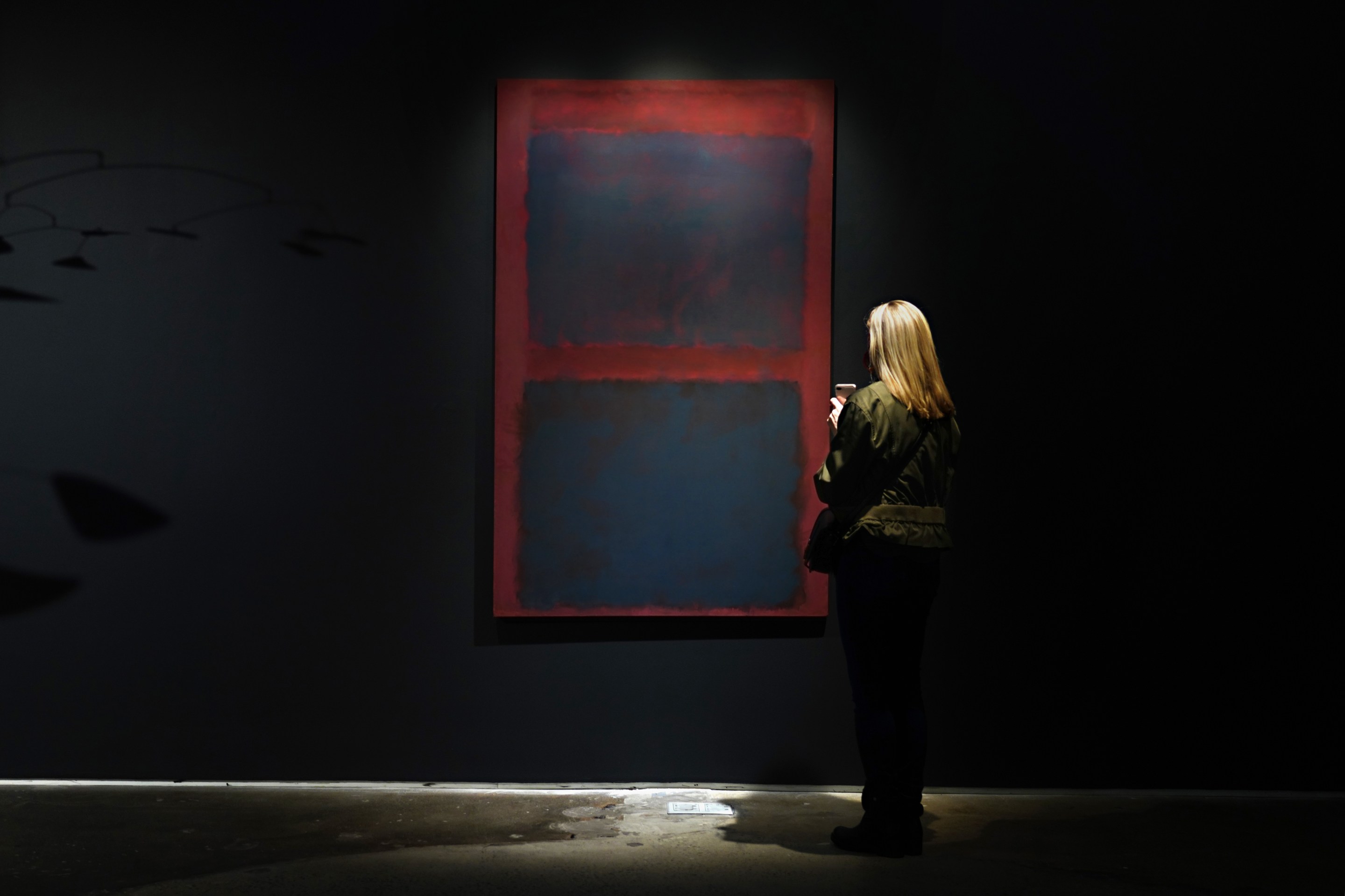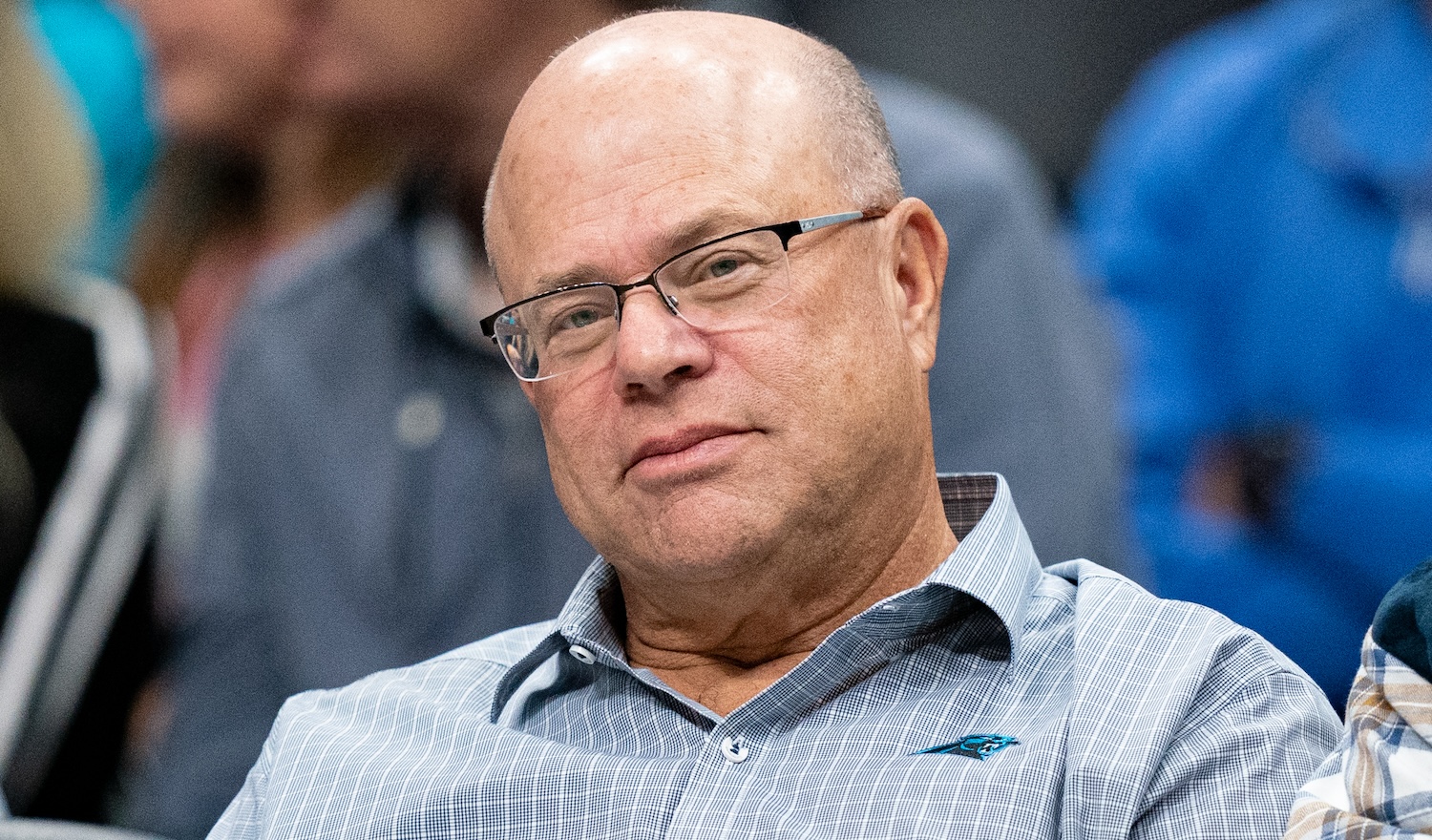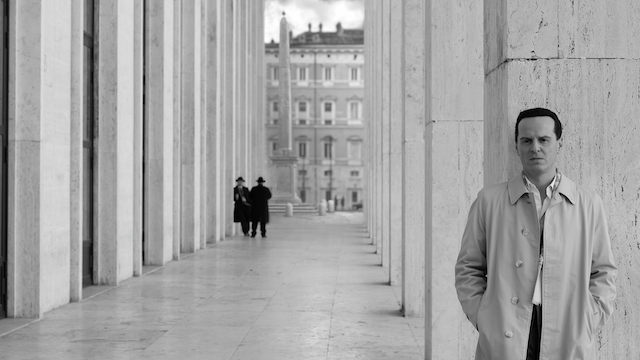The Art World Has Bigger Enemies Than Forgers
1:24 PM EST on March 12, 2021

Photo by Cindy Ord/Getty Images
Because I have spent a lot of time paying attention to who buys art and where they keep it and who they donate it to, and read books like Georgina Adam’s Big Bucks: The Explosion of the Art Market in the Twenty-First Century, I wasn’t surprised to see Domenico and Eleanor De Sole when watching the new Netflix documentary, Made You Look: A True Story About Fake Art.
The De Soles are known patrons of the arts. Domenico made his fortune working for Gucci and now Tom Ford and is the chairman of the board for Sotheby’s. Eleanor has done work with both Savannah College of Art and Design and the Aspen Art Museum. The two of them radiate anger in the documentary from their immaculately clean house, and they do have a right to be angry. They were sold a fake Rothko.
Made You Look tells the story of Knoedler, an art dealership that collapsed in dramatic fashion after it was revealed that one of their dealers, Ann Friedman, had sold $63 million worth of fraudulent paintings. The documentary traces how this happened, but the fraud is simple: A man in Queens studied the biographies and the catalogue raisonné’s of famous Abstract Expressionists (Rothko, Motherwell, Pollock, de Kooning, etc.), and created some paintings that could have been theirs. He made beautiful, immaculate frauds.
The De Soles play a role in this story because they bought one of these frauds, and sued Ann Friedman for it. On the stand during their trial, Eleanor cried. The case was settled out of court before Friedman ever took the stand.
After the documentary ended, I couldn’t stop thinking about what happened to the fake painting. It really was beautiful. It didn’t have the provenance to be a real Rothko, and certainly someone with the education needed to determine such things should have known that, but it looked like a Rothko. The actual piece of work in front of the De Soles when they bought it was just as beautiful. Everyone in the documentary concedes this: The fake was gorgeous, even Rothko’s son said so. What the De Soles had lost wasn’t beauty, but investment. The tears were about money.
Rich people have ruined art in a lot of ways. They buy beautiful things and hide them away in their mansions. They buy art so that they can write it off on their taxes. They inflate the worth of a piece of art because they have so much money that buying paintings for $12 million is an investment that makes sure they’ll be rich forever. Art is being produced, sold, resold, and donated, at a more rapid rate than ever before because the art is money now. Everything is money. It’s capital, baby. But what made these works worth so much?
While watching Made You Look, I seethed. The documentary itself, like all documentaries, had to narrow the scope of its focus in order to maintain a reasonable storyline and focus on the fraud that occurred. But the people who were defrauded, these hundred-millionaires, are extremely not relatable to me, and so in the end, when Eleanor De Sole sits on her fancy couch smirking at the camera, I found myself full of fury.
The fake work they bought was supposed to be a Rothko. Rothko, like all of the other artists who were mimicked by the fraudster, was an abstract expressionist. If you weren’t forced to take several years of art history, you might not know that Abstract Expressionism is the American Art movement. It spawned from a group of New York artists who saw Picasso’s Guernica displayed in the MoMA, were inspired, and took over the world. Before Abstract Expressionism, no one in Europe took American art seriously, and certainly no one was paying big money for it. The Americans were not cultural icons, they were not building the conversations of the future. At least not until the 1940s.
But the important thing to understand about the Abstract Expressionist movement is that its roots were federally funded. We paid for it to exist. Mary Gabriel wrote an incredible book titled Ninth Street Women: Lee Krasner, Elaine de Kooning, Grace Hartigan, Joan Mitchell and Helen Frankenthlaer, Five Painters and the Movement That Changed Modern Art. In it, she tells the stories of five women who were abstract expressionists, who worked at the same time as all of these men whose paintings were copied in the documentary. Throughout the book she argues that these women were just as important and just as pivotal to America’s first great modern art movement, but she starts with how they got to the movement in the first place. Here is a paragraph from early in the book that I could not stop thinking about while I watched Made You Look:
“Using megaphones to broadcast their chants and songs, agitated masses gathered [in Union Square] daily demanding from the government all the things they lacked. It is tempting to say that miraculously such relief came, but it was no miracle. In 1935, relief arrived in the form of the Works Progress Administration, and among it’s beneficiaries were the nation’s artists. When told that painters were starving and needed federal help, President Franklin Delano Roosevelt said, “Why not?... I guess the only thing they can do is paint and surely there must be some public place where paintings are wanted.” With that simple concession, the Federal Art Project was born. It would be the greatest aid program for artists in American history, and a first step toward creating an environment that would revolutionize the history of art.”
The Federal Art Project gave artists a weekly paycheck of $23.50 to paint murals and teach art classes and build public sculptures, to imbue American life with art. That’s $488.70 a week in 2021 dollars, or about $23,000 a year. It’s not enough to be rich, but it was enough to live in the 1930s. It was a basic income. We invested in the arts and look what it brought us: a movement that made America a cultural titan, and hundreds of paintings worth millions of dollars.
I’m not an economics reporter, but Annie Lowry is. Here’s a paragraph from her book, Give People Money: How a Universal Basic Income Would End Poverty, Revolutionize Work, and Remake the World:
“The United States would be significantly richer right now if it had passed more fiscal stimulus at the onset of the Great Recession. It would be richer if it invested in infrastructure. It would be richer if it chose to ensure that no child grew up in poverty. It would be richer if it had worked to make black and white Americans, as well as men and women, true equals. . . poverty in the United States is a choice. Stagnant middle-class incomes are a choice. Technology-fueled mass unemployment is a choice. Racism is a choice. The patriarchy is a choice. This is not to discount how deeply entrenched existing policies, interests, and tendencies are—but to recognize that while they might be entrenched, they are not immutable.”
The policies we make (and fail to make) determine our future. And since the New Deal, we have decided that new art is not worth much to us. If rich people can’t make money on it right now, what is the point of it? These paintings could only exist (even as fakes) because we built a foundation in our society upon which people could make art. We don’t have one anymore.
“It begins to seem to me inevitable that I will have to teach full time (if I can find a job) and turn the main thrust of my effort into earning money. Given my physical and psychological weaknesses, this turn would, I think, kill the work inside of me,” the sculptor Anne Truitt wrote in her book, Daybook: The Journey of an Artist, published in 1982. She had children. Her work was becoming known, but not known enough to support her fully. Would she be able to continue without teaching? What if she hadn’t been able to? Would her work have continued to evolve? How many sculptures did that worry about money rob us of?
The paintings rich people buy and sell with abandon, that appreciate in value for them as assets, aren’t just the result of policy that allows artists to create, though. Their value also depends on how those pieces fit into a greater conversation that society is having at the time. But the richest people in our society are killing that, too.
Throughout Made You Look, the audience is shown many photographs and videos and headlines. Media, in other words. The producers make the case that there were many ways to know that these paintings were fake using published media. They show photos of the artists' studios, hundreds of them. Wouldn’t these paintings have shown up (at least in the background of one of these photographs) had they been real? They show a Time Magazine story about Jackson Pollock with the headline “Is he the greatest living painter in the United States?”
An artist doesn’t become famous in a vacuum. They become famous because people who know what they’re talking about (be they historians, curators, or critics) indicate that this person might be worth something, that perhaps we, the general public, should pay a little bit more attention. Because how does a layperson (or even a billionaire) know what art is worth something? I spent four years at a fine arts high school having the same conversation: What is art? What makes something art? Is it the technical skill? Is it the response it evokes? Is a banana duct taped to a wall art? Is a sound art? And if so, what is it worth?
With the exception of obscenely expensive constructed art like the kind Jeff Koons produces, most art isn’t expensive to make. The actual worth, without any attachment of ideas or culture, is usually low. A painting can be made pretty cheaply, even a big one. You can build a giant canvas, stretch the cloth over a wooden frame you’ve nailed together, and cover it with paint for less than $200 in supplies.
But to calculate the “worth” of something, to price it, requires more than just adding up the cost of the supplies. You need to add in the fixed costs: things like office space and tools and labor. That’s the variable that is up for debate. How much is a person’s time worth? How much is their talent? Who decides that?
Artists don’t decide that. “Whenever Hollywood does a movie on artists they don’t know how to deal with what drives an artist,” Elaine de Kooning once said in 1951. “They always think an artist works toward fame. They can’t imagine the thrill of the actual work, it doesn’t occur to them. [The work], they feel is just on the side, and fame is the aim. Whereas it’s exactly the opposite. [Work] is the aim, and fame is a byproduct.” The artist wants to paint, to sculpt, to have enough money to buy more paint and more canvas, and pay their rent, and pick up a bottle of cheap wine. The aim is for most people creating art not to become millionaires, but to make enough money to keep making art forever. The artist, for example, can tell you what a piece means, but they cannot tell you its value.
Value is separate from meaning. A novel may have meaning (a story), but no place in the cultural conversation: no value. This is the work of the critic. A critic does not create but contextualizes. A critic tries to situate a piece in its environment, to judge it based not only on its technical content but on the questions it manages to ask and answer, and to provide a value to the art we see outside of the number placed on the canvas by the people at Sotheby's. “Among other things, criticism involves making finer and finer distinctions among like things. If criticism is devalued, artists and curators have no other choice in the current crisis of relative values but to heed the market’s siren song,” David Levi Strauss wrote in an article for The Brooklyn Rail about why art criticism matters.
But rich people are actively devaluing criticism all around us. When news organizations have layoffs, the first heads to roll are usually the culture teams. These are television and movie and book critics getting laid off. The art critics have long been gone. And that’s for the publications that still exist. Many publications that long covered fine arts, like The Village Voice, have been stripped for parts. Despite the access and freedom of the internet, we have fewer paying art criticism jobs than 50 years ago, and the media landscape to support criticism becomes more barren every year. The infrastructure that bolstered and questioned and legitimized the art movements of the past may not exist to do that again in the future.
At the end of the Made You Look, the De Soles get their money back. Reasonably, I know that this is the right resolution. People lied to them, and they purchased something under false pretenses. But in my heart, I am angry.
The painting they bought, a fake Rothko, was genuinely beautiful. That it isn’t an actual Rothko changes nothing about the painting that hung on the walls of their house for years. It only changes what their investment was worth. It wasn’t about the beauty of the art to them, it was about the art's history and its value. It was about the very conditions that our current policy and actions are making sure will never be repeated.
This time last year, I felt under my diaphragm a fluttering of hope. Maybe, I thought, we would get another New Deal, another Federal Arts Project, another Abstract Expressionism movement, another robust criticism culture. Maybe, I dared to dream, this immense pain and suffering would result in a policy change that would allow more art to exist in the future, that would allow people to create without worrying about if they had enough money to eat dinner. Here was our chance, the pandemic, the Biden administration, to create a New New Deal, to give ourselves the breathing room we deserve. But that didn’t happen. Even in this year, when we have dubbed teachers and nurses and grocery store workers “essential employees,” we haven’t been able to pass a $15 minimum wage with ease. There have been two stimulus packages equaling $3,200, or six and a half weeks worth of work under the Federal Art Project.
What we’re left with instead is a world in which the super wealthy will continue to covet, buy, and hoard expensive pieces of art without ever being expected to improve the material conditions of the very people who originally created and assigned value to the pieces they want so desperately to adorn their expensive homes with. The story that unfolds in Made You Look presents a clear villain, and it isn’t the people who painted a fake Rothko or the ones who sold it.
If you liked this blog, please share it! Your referrals help Defector reach new readers, and those new readers always get a few free blogs before encountering our paywall.
Staff Writer
Read More:
Stay in touch
Sign up for our free newsletter




